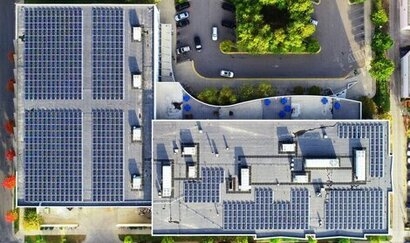
The Factsheet tracks key mile markers along the energy transition pathway. In 2021, renewable energy continued to be the number one source of electricity generation for Minnesota at 28 percent while zero-carbon sources, renewables and nuclear technologies, provided the majority at 52 percent. Power sector emissions have fallen 40 percent over the last decade and while they rose slightly in 2021 from 2020 levels, they were still lower than their pre-pandemic levels in 2019. The increase in emissions was expected and driven by an economic rebound and a slight increase of coal-powered electricity due to the high cost of natural gas. Meanwhile, Minnesota’s energy productivity, or how efficiently the state uses its energy, rose again in 2021.
“The data from last year shows how the clean energy transition is happening in Minnesota in real time, and the decline of energy imports is an especially exciting metric as we work to achieve energy independence” said Gregg Mast, Executive Director of Clean Energy Economy Minnesota. “The challenges of 2021 have demonstrated why it’s more important than ever to continue expanding our clean energy sector with thoughtful policy and smart investments.”
Lisa Jacobson, President of the BCSE, added that the data tracked by the 2022 Minnesota Energy Factsheet confirms the industry’s vital importance to the state’s economy and that the facts support continued public policy support and investment in the clean energy sector, for its economic and environmental benefits to residents of Minnesota.
The Factsheet is a companion to the 2022 Sustainable Energy in America Factbook, which outlines key trends influencing national and state investment and economics, energy supply and energy demand. Both resources are commissioned by the Business Council for Sustainable Energy (BCSE), with research by BloombergNEF. The Minnesota Energy Factsheet is made possible with the support of the McKnight Foundation.
“Minnesota leads the Midwest and the nation in growing an equitable clean energy economy, harnessing our ingenuity and industry to revitalise our communities and provide family-supporting jobs” said Sarah Christiansen, Director of the McKnight Foundation's Midwest Climate and Energy programme. “It's everywhere you look. From Mountain Iron to North Minneapolis, Red Lake to Rochester, Nobles County to North Branch, Minnesota communities are already benefiting from wind, solar, energy efficiency, and electric vehicles - and these benefits will only continue to grow.”
Findings from this year’s Minnesota Energy Factsheet include:
The majority of Minnesota’s electricity consisted of zero-carbon power at 52 percent in 2021 – compared to the national average of 39 percent.
Renewable technologies provided 28 percent of Minnesota’s generation in 2021. Over the last decade, renewable generation has increased 60 percent from 10.6TWh to 17TWh in 2021.
Renewables account for 81 percent of all new power-generating capacity built in Minnesota in the last decade.
In 2021, wind and solar accounted for nearly all (98.5 percent) of new generation capacity added in Minnesota.
Minnesota is on its way to achieving energy independence – with energy imports falling to just 10 percent in 2021, compared to 22 percent a decade ago.
Minnesota continues to outpace the nation in emission reductions - now 45 percent below 2005 levels vs. the 35 percent reduction nationwide.
Power sector emissions in Minnesota have fallen 40 percent in the last decade. The rebound in economic activity in 2021 has corresponded to a 9 percent increase in emissions, but they remain below pre-pandemic levels.
Minnesota’s energy productivity (how efficiently we use energy) increased to 29 percent from 25 percent in 2020.
The American Council for an Energy-Efficient Economy (ACEEE) ranked Minnesota 9th out of all 50 states for its overall energy efficiency programmes.
Minnesotans are choosing electric vehicles at an increasing rate. Annual registrations for electric vehicles have increased 300 percent in the last 5 years.
For additional information:
2022 Minnesota Energy Factsheet

